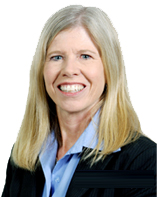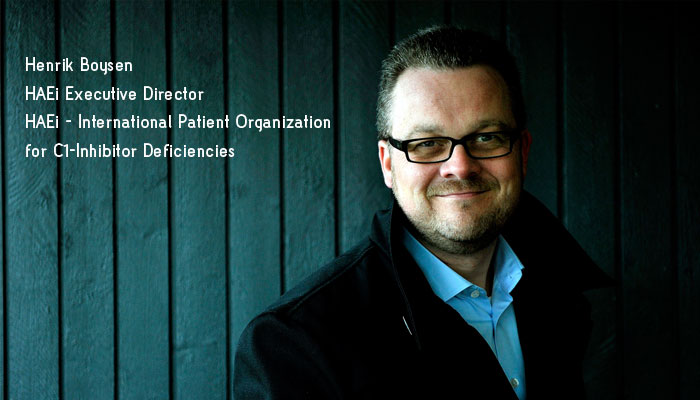Healthcare Information Systems are not just about capturing and storing the data. They need to enablecare providers to understand and act upon that data

COO
Healthcare is known to be a unique sector whose needs, demands and dynamics are different in many ways compared to other industries. What is your perception in this regard?
The healthcare industry requires highly reliable systems that are available anytime, anywhere. It is an industry undergoing profound change and information technology is a key enabler in solving some of the big challenges – spiraling costs, more complex care scenarios, an explosion of chronic diseases.
For last 30 years, InterSystems has been a leading provider of innovative software solutions like Epic, iSoft, McKesson, to the healthcare industry. Would you like to share some insights on the company’s growth and expansion in this sector?
Many of the worlds’s leading clinical and laboratory information systems are built on InterSystems technology and our technology is used by more and more software vendors in healthcare and beyond to build breakthrough applications – applications that embed interoperability, analytics and other key capabilities. We continue to release new technology to help our application partners gain competitive advantage. For example, we have just recently launched technology that unlocks the value hidden away in unstructured data such as clinical notes – called “iKnow.”
We also offer our own healthcare information system (TrakCare, which is sold outside the United States) that is built upon InterSystems’ core technologies and TrakCare’s business is growing significantly in strategic markets such as the UK, the Middle East, Thailand, China and Brazil. We recently expanded into France as you know with the acquisition of Siemens Health Services.
Which factors are crucial today for the use of IT in healthcare? What are the factors behind InterSystems’ consistent growth in the healthcare IT market?
Clinicians need systems that are configurable enough to work the way they do and the fast-paced environment means that they need information presented in thoughtful, uncluttered ways with streamlined workflow. With TrakCare, healthcare organizations get the benefit of a system with advanced clinical capabilities with a patient administration system that is tailored to local practices and requirements. We combine implementation experience from 25 countries with local delivery teams that understand the unique conditions of the local market.
InterSystems were one of the first vendors to embed analytics in our system, enabling our customers to make more informed decisions on live, operational data. C-level executives are empowered with TrakCare dashboards that enable them to benchmark against KPIs and drill down on the data to make changes immediately.
2007 was a crucial year when InterSystems acquired TrakHealth. What was the objective behind this acquisition? What was the impact of TrakHealth acquisition on InterSystems and the healthcare IT market?
Acquiring TrakHealth enabled InterSystems to offer an end-to-end solution for connected care so we have many solutions available to customers to help them solve their connected care challenges. For example, we have customers throughout the world that connect their existing systems with our InterSystems Ensemble integration platform. The country of Sweden has leveraged existing investments in disparate systems and put InterSystems HealthShare over the top to connect everything into a national Electronic Health Record.
The acquisition provided TrakCare with access to InterSystems’ extensive infrastructure, including offices in 25 countries. InterSystems technology is installed in a majority of healthcare institutions around the world (80,000+ systems, 3.2 million users), providing TrakCare with increased visibility within this community. TrakCare has taken InterSystems into new geographic markets, such as the Thailand and the Middle East.
TrakCare brings other InterSystems technology into accounts and vice versa. For example, many TrakCare customers also purchase Ensemble to connect third party systems with one another.
The impact is that market has a single provider that can meet all connected care needs. We choose the right product(s) to meet the client’s needs. The acquisition has also fueled InterSystems’ growth given TrakCare’s global market success.
Recently InterSystems received Frost & Sullivan customer leadership award which testifies about its business philosophy & culture. What makes you so different from your competitors in terms of culture & business Philosophy?
InterSystems is a profitable, privately-held company. That enables us to be customer-focused instead of focused on delivering quarterly results to the stock market. We take a long term view to our partnership with clients and we believe that if our clients are successful with our software, we will also be successful.
Which are your most successful implementations large projects globally so far? Can you share some of the high points of testimonials/feedback received from your customers?
InterSystems have been involved in many large scale electronic patient record projects, including a patient management system for all of Scotland. The first Board was rolled out in under one year and we are proud of our ability to get clients up and running and seeing benefits quickly. In the state of Brasilia in Brazil the client was able to realize benefits immediately – better bed management capabilities enabled significantly higher utilization rates; a web portal for access to lab results enabled significant cost savings by reducing lost test results and unnecessary duplicate test; and pharmacy management functionality cut lost quantities of medications, duplicate prescriptions, and distribution of medicine without a doctor’s prescription.
In India, Sir Ganga Ram Hospital realized the following benefits: increased outpatient throughput, savings through better inventory and medical package control and support for pharmaceutical substitution, more rapid access to laboratory results, and reduced adverse allergy and drug interaction incidents. With TrakCare, Manipal Hospital has been able to increase revenue 15-20% through better utilization of doctors’ time.
What were the areas focused while designing TrakCare? What was the target market like?
TrakCare has led the way in product innovation over the years – being one of the first vendors to offer patient-centric software, one of the first to offer an Internet-based HIS, one of the first to embed interoperability (it is built upon InterSystems’ Ensemble integration platform). As an Internet-based system, care providers have access to patient information anytime, anywhere they have access to the Internet. It is built on a single data repository so comprehensive patient data is available in a single electronic patient record.
Unlike other systems, TrakCare was designed from the beginning for the international market. TrakCare is a multi-language, multi-currency system. Configurability is a very important differentiator – the same product serves multiple markets (with a regional version of the product available in strategic markets to meet local requirements).
What are the market opportunities for TrakCare & Healthcare Industry in the next few years i.e. till 2015? Apart from TrakCare which are the new applications, Software’s Intersystem’s is going to come up with?
Our focus right now is on serving our existing geographic markets and making our existing customers successful. We would entertain new markets where significant, game-changing projects arise. We are continually innovating and delivering new technology based on the healthcare market’s evolving requirements. We have an aggressive product road map for TrakCare and TrakCare Lab that we believe will keep us at the forefront of innovation. Electronic medication management, for example, is an area where healthcare information systems can have a dramatic impact on quality of care and it is an ongoing focus area for us.
As said, TrakCare has many benefits as It supports the broadest spectrum of care settings – with clinical, administrative, laboratory, and community care capabilities – in a multi-language Internet-based healthcare information system unified by a single data repository. What were the challenges you faced while introducing & implementing TrakCare?
Healthcare information systems implementations are complex. One of the biggest challenges is change management. We work with our customers to facilitate user adoption as a key part of our implementations.
Emerging markets like India & other Asian regions are currently witnessing faster maturity among healthcare providers towards adoption of IT driven systems and sophisticated technology applications. How do you foresee opportunities in such markets and what are your strategies to expand business in these markets?
We are excited to be a part of projects in Asia that are transforming the delivery of care. Vejthani Hospital in Thailand, for example, is competing in the global market for medical tourism. United Family Hospitals and Clinics is a market leader in private healthcare in China. Both are adopting sophisticated IT capabilities that enhance the quality and safety of care. Our strategy is to work with market leaders, deliver success, and business expansion will follow.
Asian Hospitals and Healthcare Management’ a leading Healthcare title in print and digital versions reaches directly to key industry professionals & the decision makers in the Healthcare industry. The magazine addresses the most significant developments, trends and features opinions and analyses by respected leaders from the Hospitals & Healthcare industry. What do you think about our magazine who is into promoting & branding healthcare industry today on such a wide scale?
The publication is a really important resource for helping Asian hospitals to manage the transformation taking place in the market. Hospitals need access to information about trends, best practices, etc. and you are fulfilling an important role. We’d be thrilled to share case studies and put you in contact with some of the hospitals that we believe are leading in IT innovation




